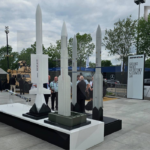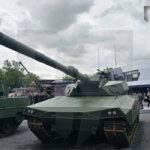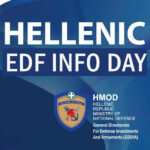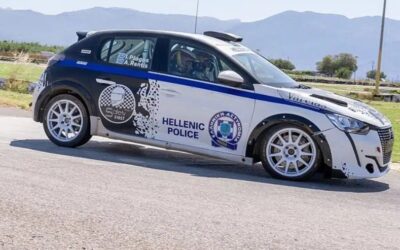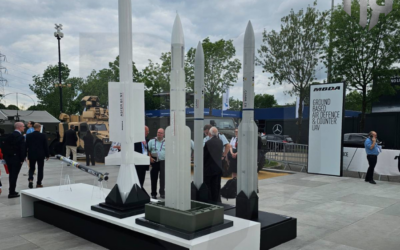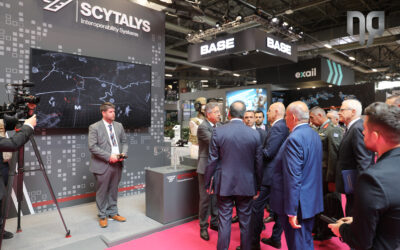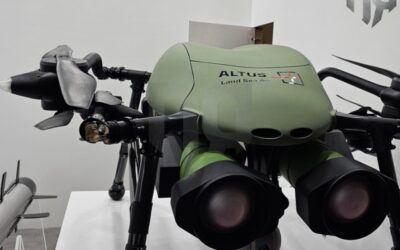THEON INTERNATIONAL PLC (THEON), one of the leading manufacturers of night vision and thermal imaging systems for defence and security…

A memorial in the French town of Frethun is a public reminder of the transatlantic alliance of NATO and those who have served its cause.
The unveiling ceremony in 2012 was attended by NATO officers and their representatives. Each year an interfaith ceremony marks the sacrifices of those who died and served in NATO missions. The event is usually held on September 11.
The war in Afghanistan was an important turning point for NATO. When the United States invoked Article 5 of the Atlantic Charter in calling for response to 9/11, it was the first time a NATO member state had invoked the members’ common defence commitment.
Willy Breton, a former gendarmerie and the president of the memorial foundation, served under NATO command in both the Western Balkans and in Afghanistan. Yet, it was an incident in his later life that inspired him to start the memorial.
During his tour an IED resulted in the death of Corporal Janzen Luc and Captain Barek-Delingy Christophe, he said.
Within his duties he oversaw the transfer of their bodies to an airbase for transport home and was haunted by the honor that the bodies of the two soldiers received from their fellow NATO soldiers and their allies.
NATO soldiers of different nationalities and Afghan soldiers accompanied the convoy holding a lighter or lamp a loft. Breton, as he relates, was in the vehicle leading the way and he admits that it was a personally very moving experience, as these two soldiers were brought together by death, blood and a call to service.
His service done, Breton realized that there was no public NATO memorial anywhere in the now 30 member countries. For that reason, he wanted somehow to honor the memory of the soldiers who died in NATO operations and to ensure remembrance among new generations.

Breton considered several cities for a memorial and eventually chose the French village of Fréthun. The instigator of the monument notes that this location was chosen for a number of reasons: The nearby city of Calais has long been an important transportation hub and nearby links to the Paris-London high-speed railway ensure the memorial is reachable from a variety of airports. The support of the then-mayor was also crucial, as he has mentioned.
Madame Catherine Fournier made land available free of charge and a committee was established which allowed the NATO Memorial to be born. The monument, after it was built, was transferred to the town hall of Frethun. The initial committee was dissolved and the Federation of the Nato Memorial was officially created.
The modest memorial consists of two standing slabs that note the service and NATO member states. To some observers the modest monuments invoke the Twin Towers destroyed by Al-Qaeda terrorists on September 11, 2001.
Public recognition of NATO is rare. One of the largest monuments, an eternal flame monument in Belgrade, is actually meant to criticize the alliance by marking the military and civilian casualties from the NATO bombing of Yugoslavia in 1999.

Each year the site at Frethun hosts a memorial service that brings together representatives of eight different religious traditions including Catholics, Muslims, Hindus, Anglicans, Jewish, Protestants and Orthodox on the anniversary of 9/11. Last year’s ceremony saw the unveiling of a stele, a vertical stone and wooden monument for Belgian and Czech soldiers and another for military service animals.

The NATO Memorial Foundation has some 36,000 members who have joined the effort for the sustainment of the monument online. The figure includes a number of high-profile figures such as Sandor Lothringen, a Habsburg royal and his wife. Other prominent members include former high-ranking military officers, a Hawaiian royal and many members from non-NATO countries.
Hollywood actor Mark Harmon has sent a letter of support to the memorial. Beyond just the memorial upkeep and events, the memorial funds sports events and also a division that seeks to find funding for prosthesis for wounded NATO soldiers.

While Russia’s invasion of Ukraine has brought NATO’s geopolitical importance to the forefront, the memorial is built for the day when NATO is no longer making headlines. Projects such as this one play a vital role in keeping NATO and its values alive in the public memory, Manuel Dos Santos, president of the Young Atlantic Treaty Association (YATA) chapter in Portugal, said.
Also read: HNDGS | Monument to the Nation’s Fallen inaugurated at “PAPAGOU” Camp – Photos
READ MORE
Racing “patrol vehicle” of the Hellenic Police hits the road – VIDEO
The motor sports competition team of the Hellenic Police was seen a few days ago in the city of Kalamata. The race of the “patrol vehicle”…
THEON INTERNATIONAL’s MIKRON Night Vision Goggles make Netflix debut
THEON INTERNATIONAL announced that its cutting-edge Night Vision Goggles MIKRON have made a thrilling appearance…
EUROSATORY 2024 | Missile Artillery Solutions from MBDA
With such a large number of interested attendees at MBDA’s pavilion at the Eurosatory 2024 Defence exhibition, the stand reminded of an…
KNDS | Showcases full range of LEOPARD battle tanks at EUROSATORY
KNDS continues to expand its technological advantage in the field of main battle tank development, as we have witnessed at the Defence and…
THEON SENSORS | Distinguishing appearance at EUROSATORY 2024 with new range of products
THEON SENSORS attended the International Defence and Security Exhibition EUROSATORY 2024 as an ambassador of Greek innovation…
Ministry of Defence | Organization of Hellenic EDF Info Day
A Conference entitled “EDF Info Day” is organized in the Amphitheater of the National Gallery on Tuesday, July 9 from 09:00 to 17:00.
ALTUS LSA | Participates in EUROSATORY 2024 with KERVEROS in the foreground
The participation of ALTUS LSA in EUROSATORY 2024 is among the Greek participations of operational significance.
Freddy Beleris | Ιn jail until October
The elected mayor of Heimarra and Member of the European Parliament of New Democracy will remain in prison until October…







